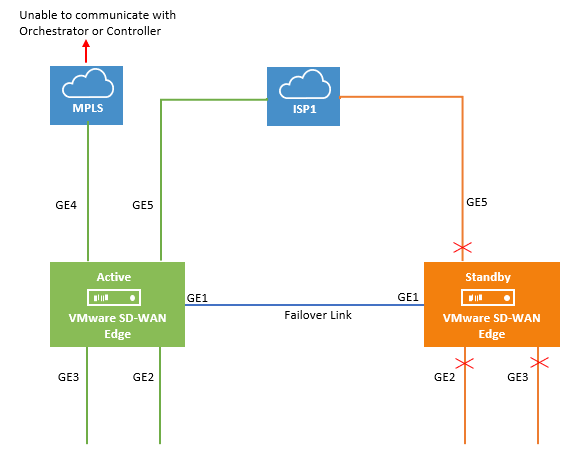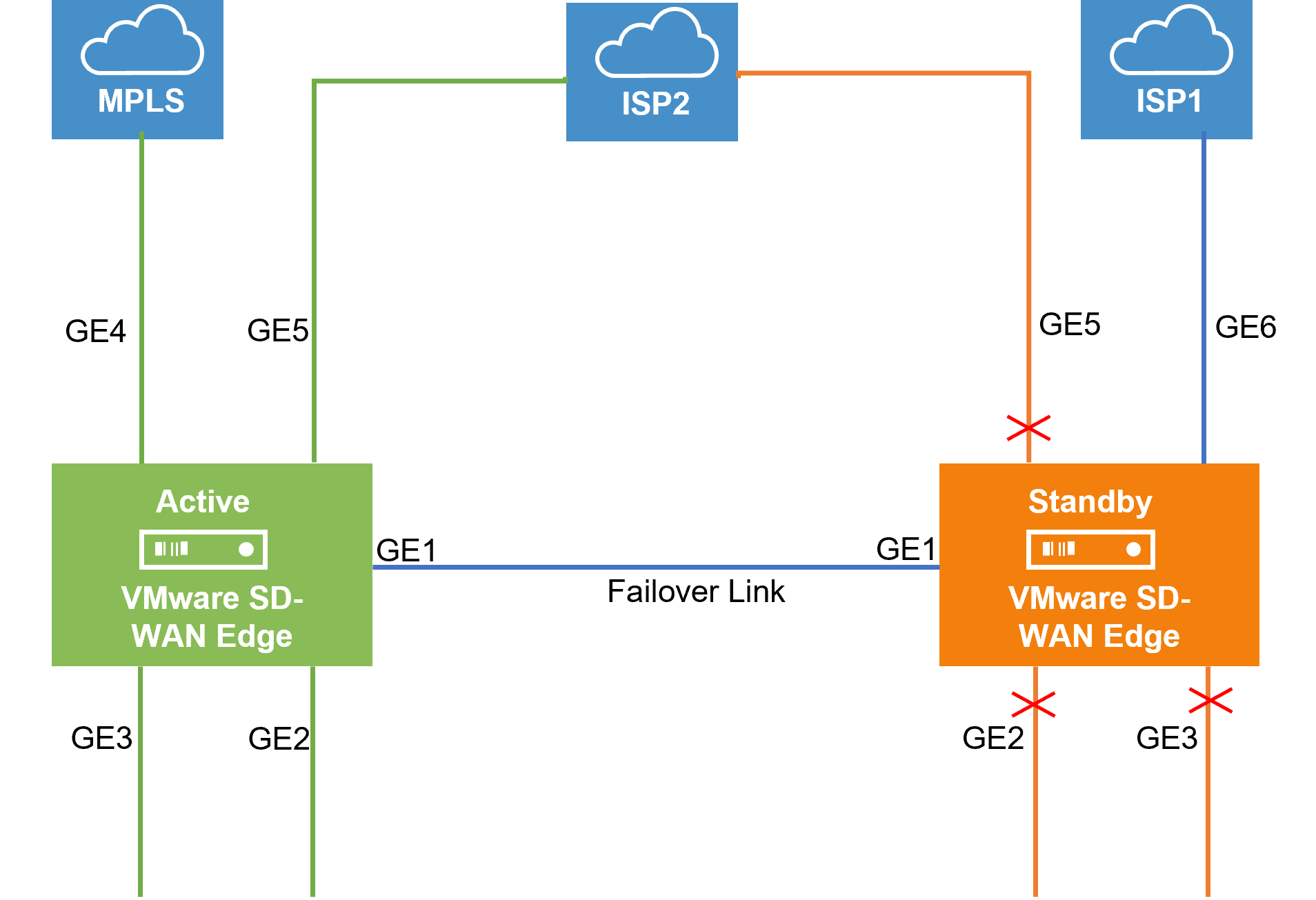The Mixed-mode HA deployment model is a combination of Standard HA and Enhanced HA deployments.
In this deployment model you can have both shared interfaces and individual interfaces.
Let us consider a scenario where the private network is unable to communicate with the Orchestrator or the controller.

In this topology, the Active and Standby Edges exchange heartbeat messages, synchronize configuration updates, and other information over the GE1 interface. Both SD-WAN Edges have mirrored LAN and WAN connections over the GE2, GE3, and GE5 interfaces, which is similar to the Standard HA deployment model. However, the Active Edge is connected to the private network using the GE4 WAN link. This is similar to the Enhanced HA deployment model. All ports on the Active Edge are kept open to send and receive traffic. On the Standby Edge, all ports except GE1 are blocked.
When the MPLS network is unable to communicate with the Orchestrator or the Controller, the site would still have connectivity to the Orchestrator or the Gateway and would be able to build public overlays.
Now let us consider a scenario when both private and public networks are unable to communicate with the Orchestrator or Controller.

In this topology, the ISP1 is connected only to the Standby Edge using the GE6 WAN link and ISP2 is connected to both Active and Standby Edges using the GE5 WAN link. All ports on the Active Edge are kept open to send and receive traffic. On the Standby Edge, all ports except GE1 and GE6 are blocked. The Active Edge leverages GE6 WAN link to send traffic to the public network, ISP1 through GE1.